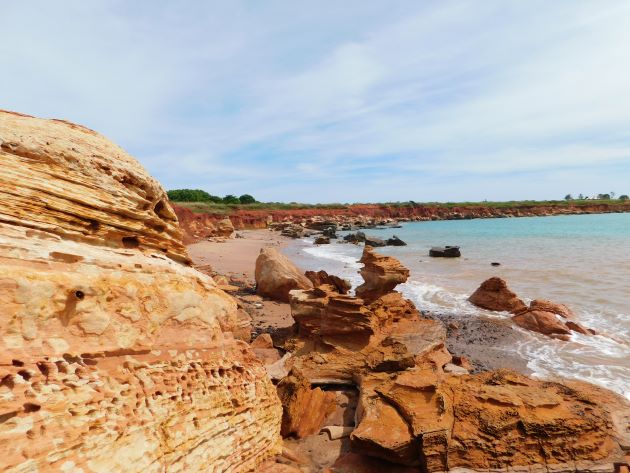
Last Sunday, April 9th, the tide in Broome was one of the highest of the year and peaked at 9.99m at 12.20pm. When we get these very big tides we don’t go to the coast until the ocean starts to recede and then the shorebirds are more relaxed. As the big tides push up the shorebirds have to keep moving and they are unsettled, but once the tide turns they are more relaxed. The header photo shows the bay in between the lighthouse at Gantheaume Point and Cable Beach. The ocean had been right up to the bottom of the cliffs and was receding rapidly.
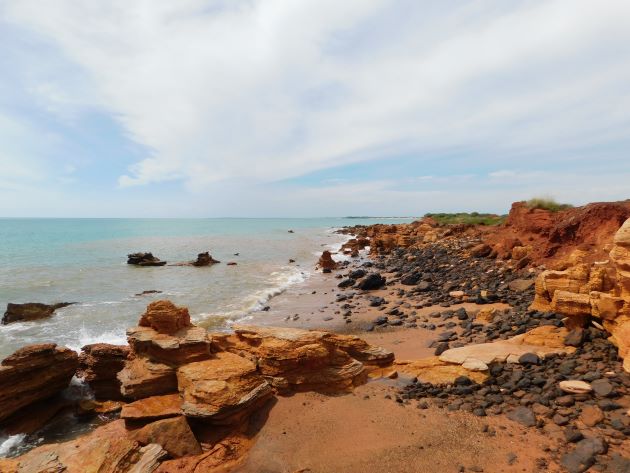
Gantheaume Point an hour after high tide
You can’t easily access much of Gantheaume Point when the tide is in and even the birds struggle to find somewhere to roost. There are always a variety of shorebirds to be observed, but on the biggest tides they struggle to find a place to roost at Gantheaume Point. There are a pair of Pied Oystercatchers that reside at Gantheaume Point throughout the year and they last successfully bred in 2020.
Our first view of the small beach when we wandered through the rocks was of numerous shorebirds roosting. They were relaxed and waiting for the tide to fall enough for them to be able to feed once again. You can almost see how fast the tide was dropping from this series of photos. There were 15 Sooty Oystercatchers and it is a good location to observe them. All of the Grey-tailed Tattlers are now in good breeding plumage as they get ready to migrate to the Northern hemisphere and breed. The Whimbrel were relaxed after the high tide too. One stand out larger shorebird amongst the flock on the beach was the lone Beach Stone-curlew.
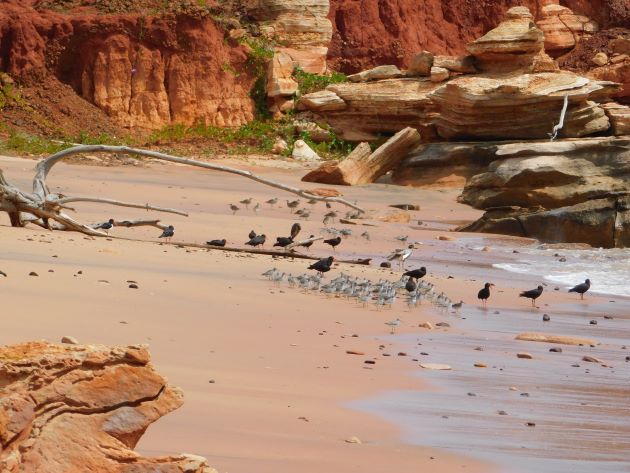
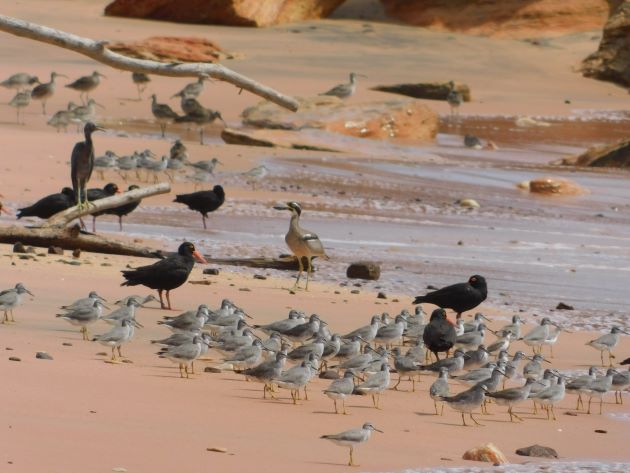
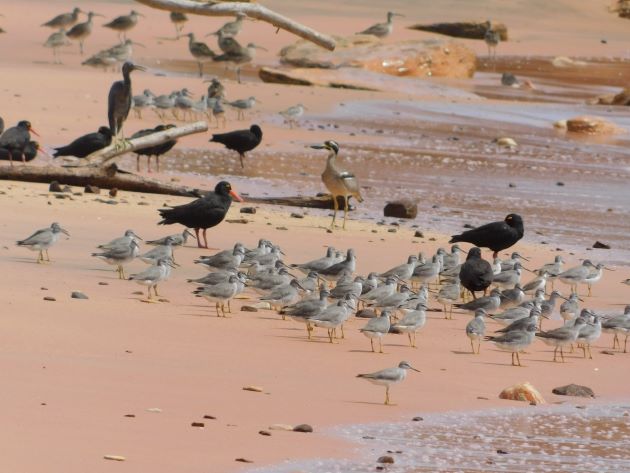
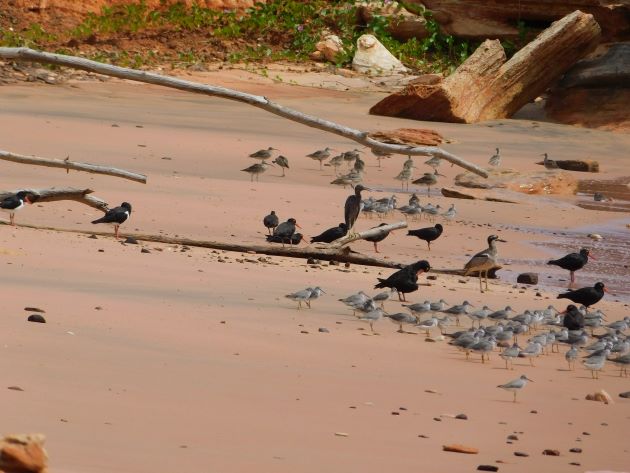
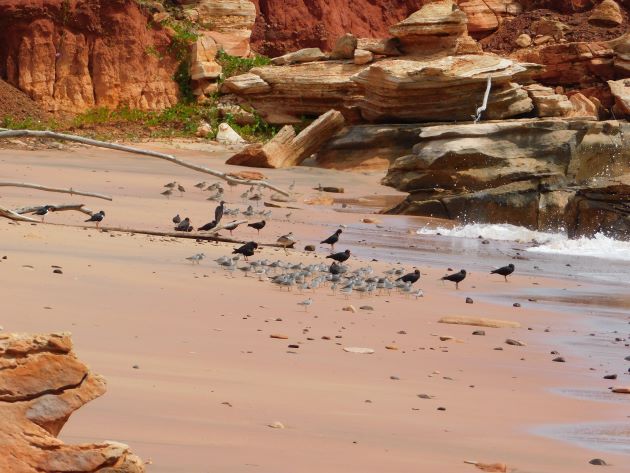
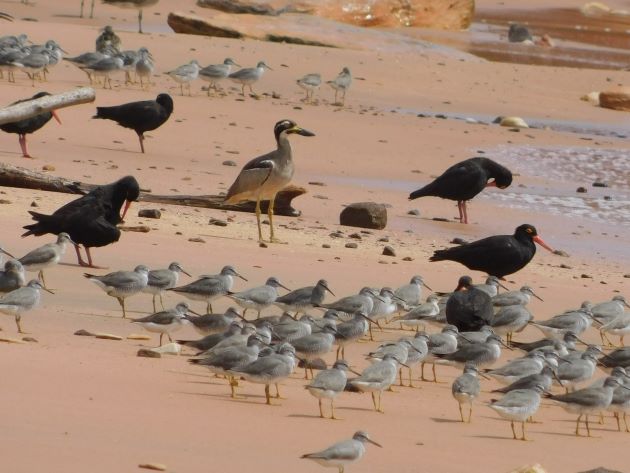
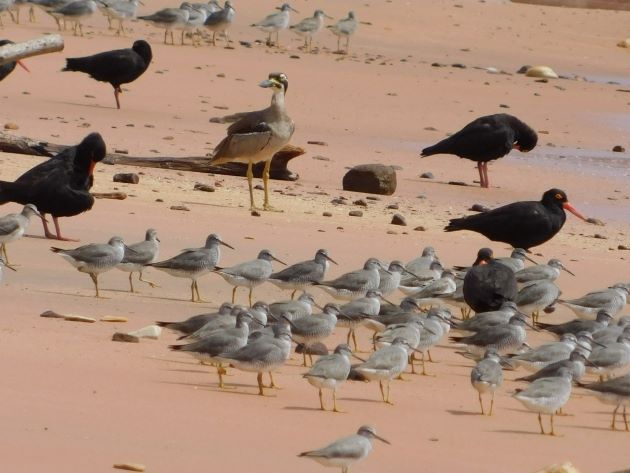
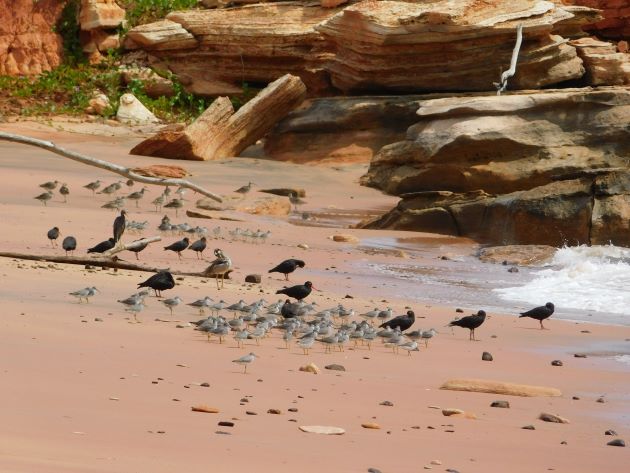
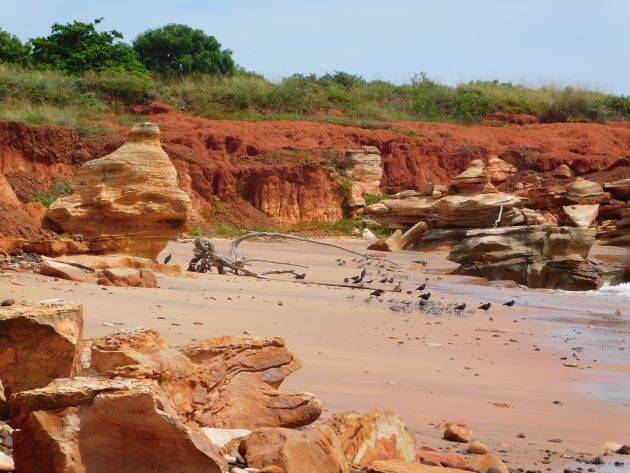
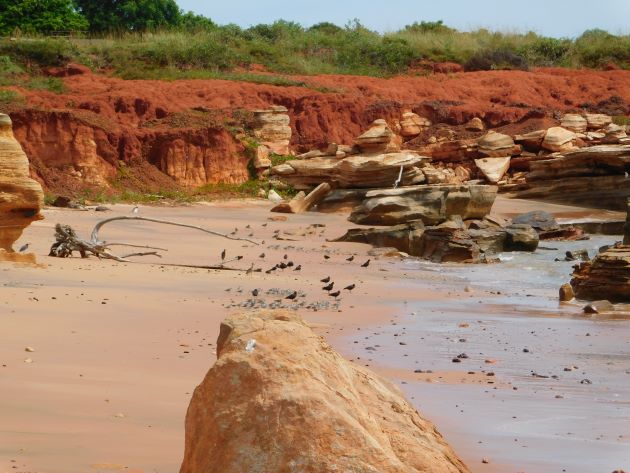
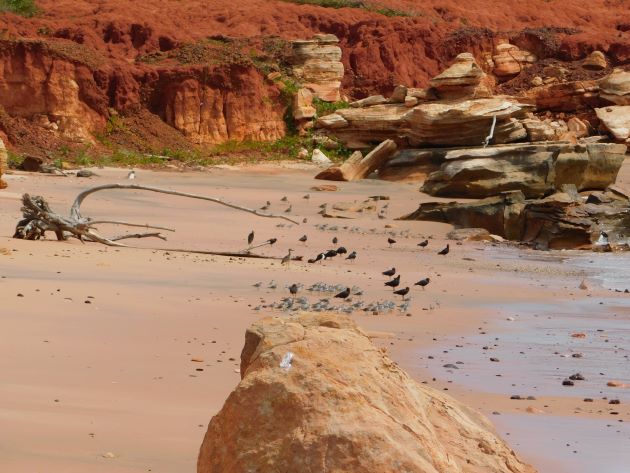
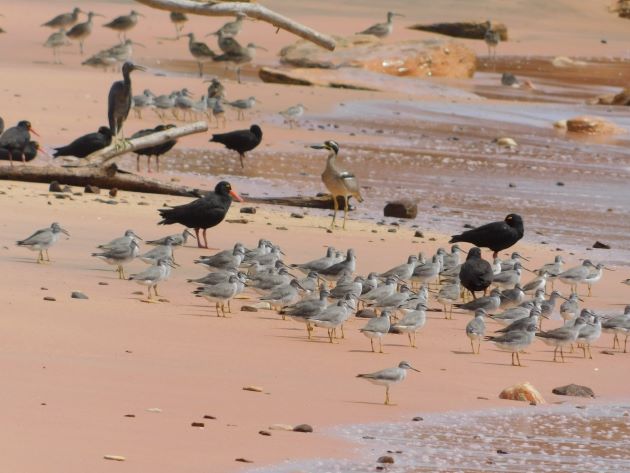
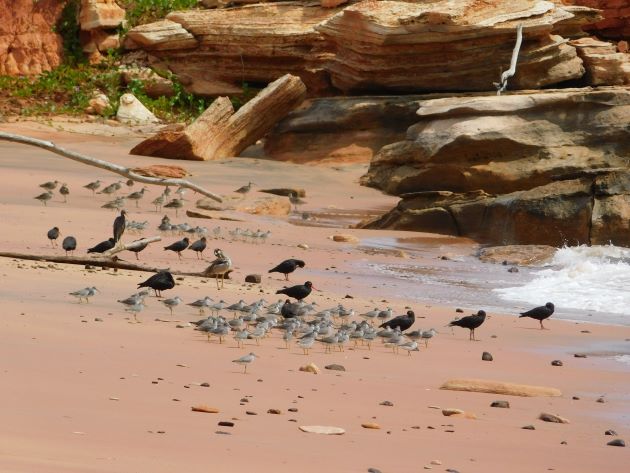
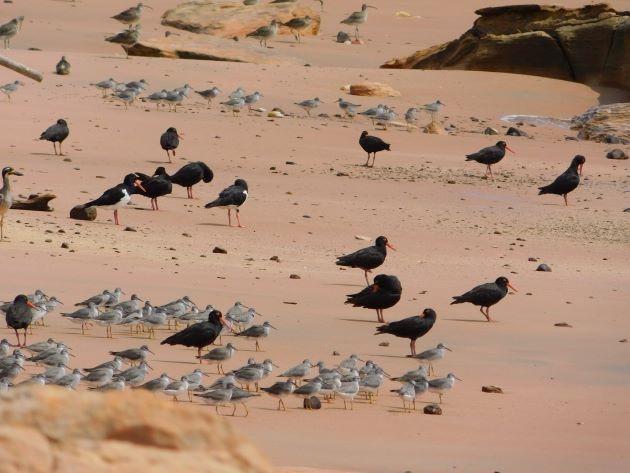
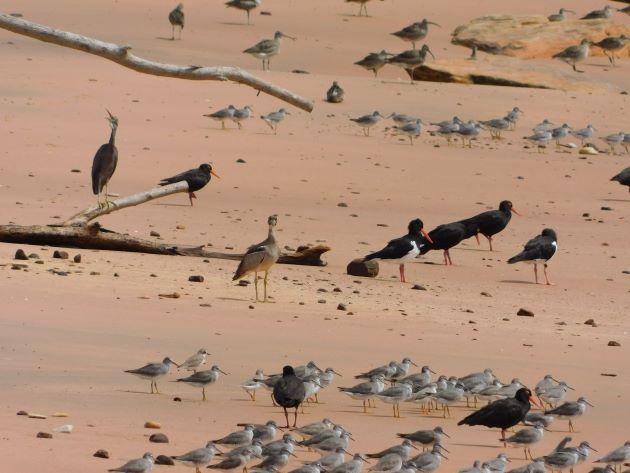
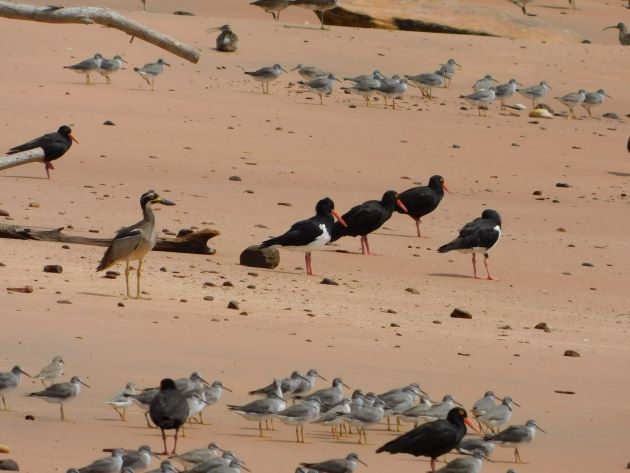
Shorebirds after high tide
There were also several Reef Egrets in the area and one was particularly relaxed after high tide.
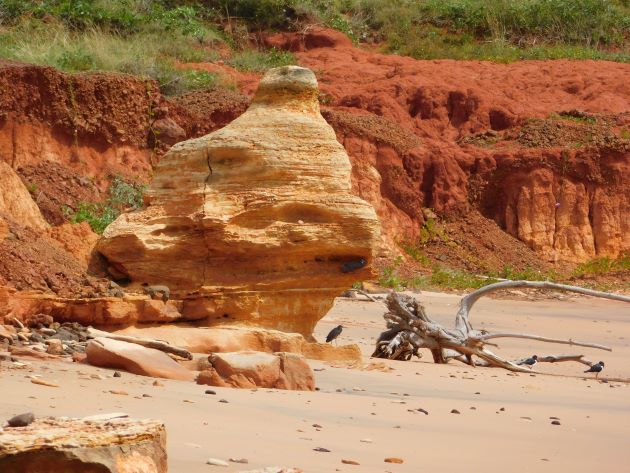
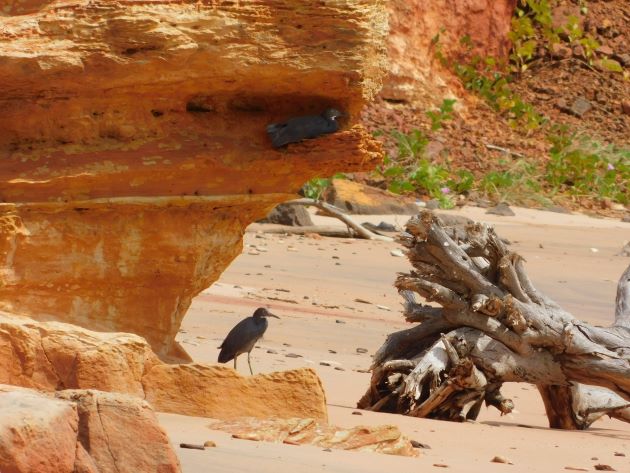
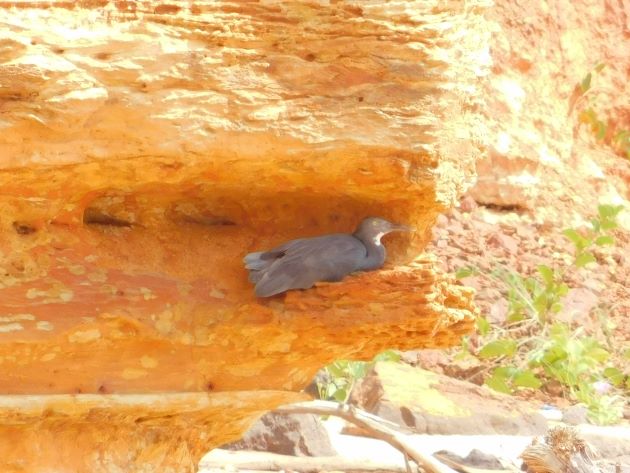
Reef Egret roosting
As you can see there is some rather large natural debris dumped onto the rocks and beach. We have had some stormy weather over the past few months, but it will soon subside. The majority of the migratory shorebirds will head north and our local shorebirds will start to breed locally once again.








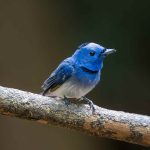




I hope you didn’t have too many problems from Ilsa!
Michael, thanks for your concern. We were fine in Broome and the main destruction was the Pardoo Roadhouse. This is one of only two places to stop for fuel on the 650km stretch of highway from Broome to Port Hedland and there is very little left. It was blown to pieces and two owners survived in a sea container. There are some devasting photos online of the destruction and we all realise how lucky we were that Ilsa hit in such a remote area. No doubt you remember that long stretch of highway from your tour….
Great to see the Stone Curlew – another natural cartoon bird!
Thanks, Kai. There are some Dollarbirds still here after Cyclone Ilsa, so they didn’t all take advantage of the wind to go north. Cat 5 may well be too much wind!